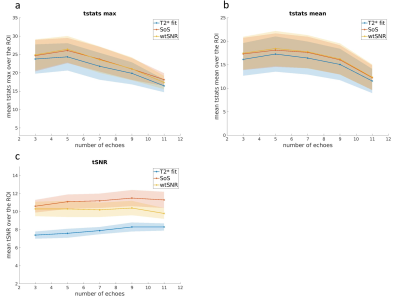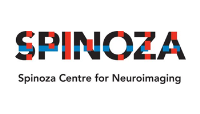Luisa Raimondo1, Jurjen Heij1, Tomas Knapen1,2, Serge O. Dumoulin1,3, Jeroen C.W. Siero1,4, and Wietske van der Zwaag1
1Spinoza Centre for Neuroimaging, Amsterdam, Netherlands, 2VU University, Amsterdam, Netherlands, 3Experimental and Applied Psychology, VU University, Amsterdam, Netherlands, 4Radiology, University Medical Centre Utrecht, Utrecht, Netherlands
1Spinoza Centre for Neuroimaging, Amsterdam, Netherlands, 2VU University, Amsterdam, Netherlands, 3Experimental and Applied Psychology, VU University, Amsterdam, Netherlands, 4Radiology, University Medical Centre Utrecht, Utrecht, Netherlands
We
present initial results of multi-echo line-scanning fMRI in humans with high
spatial (250μm) and temporal (~100ms) resolution. A multi-echo acquisition with
5 echoes and a tSNR-weighted echo combination was found to yield best BOLD
sensitivity.

Figure2: a) acquired slice and (b)
outer volume suppression: placement of saturation slabs to suppress unwanted
signal outside the line of interest, depicted by the gap (4mm) between the
saturation slabs. (c) Example of line-scanning acquisition.

Figure4: (a) maximum value of
t-stats within the ROI for every acquisition, averaged across subjects, (b)
mean value of t-stats within the ROI for every acquisition, averaged across
subjects and (c) mean tSNR within the ROI for every acquisition, averaged
across subjects. Error bars correspond to the standard error over subjects.
